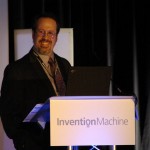Aug29
The Search for Innovations
Point: Use roving cross-functional teams to hunt for promising new product and service ideas.
Story:
In a world of large organizations and diverse global hotspots for R&D, innovation occurs everywhere. Companies can tap those innovations through search processes, which may be cheaper and more effective than only using traditional “start from square one” R&D efforts. The rationale: there may be no need to re-invent the wheel if the wheel already exists somewhere inside (or outside) your organization.
Here’s how multinationals General Mills and Whirlpool approached the search for innovations. General Mills formed two “innovation squads” consisting of six-to-eight employees selected from multiple functions. The squads are tasked with hunting for ideas from inside and outside the organization – one squad focuses on finding ideas internally, the other focuses on looking outside the organization. The squads present the best ideas they’ve found to division heads. Once a quarter, the squads give their top 10 ideas to the company chairman.
For example, one squad found a patent for a new method of encapsulating calcium. The patent had been donated to a university. The squad converted it into a very successful new line of orange juice with added calcium that doesn’t taste chalky.
Similarly, Whirlpool designates some employees as innovation mentors – “i-mentors” – training them in innovation and tasking them with identifying promising new product ideas from across the organization. Whirlpool has 1000 i-mentors globally. Most of the individuals self-identified and asked for the training, which consists of a formal training program that creates a common language for innovation and embeds innovation into an organizational competency the way Six Sigma training does. Whirlpool developed “how-to” guides for its innovators, including analysis of who has contact with whom [network analysis].
Action:
- Explicitly designate individuals or teams to look for innovations
- Provide innovation training to these cross-functional teams
- Cast a wide net when searching for good ideas
- Filter, refine, and present the best ideas for funding/implementation decisions
Sources:
“Unleashing Innovation,” Research-Technology Management, http://findarticles.com/p/articles/mi_6714/is_1_52/ai_n31337091/
Mason Carpenter and Sanjyot P. Dunung, “Harnessing the Engine of Global Innovation” in International Business, Flatworld Knowledge, August 2011 http://www.flatworldknowledge.com/pub/international-business/524265#web-524265
Jessie Scanlon, “How Whirlpool Puts New Ideas Through the Wringer,” http://www.businessweek.com/innovate/content/aug2009/id2009083_452757.ht
Peter Erickson, “Innovating on Innovation” Keynote Presentation at the Front End of Innovation Conference, Boston, MA, May 2009
Comments Off on The Search for InnovationsCase study, Growth, How-to, Innovation, International, New Product Development, R&D










